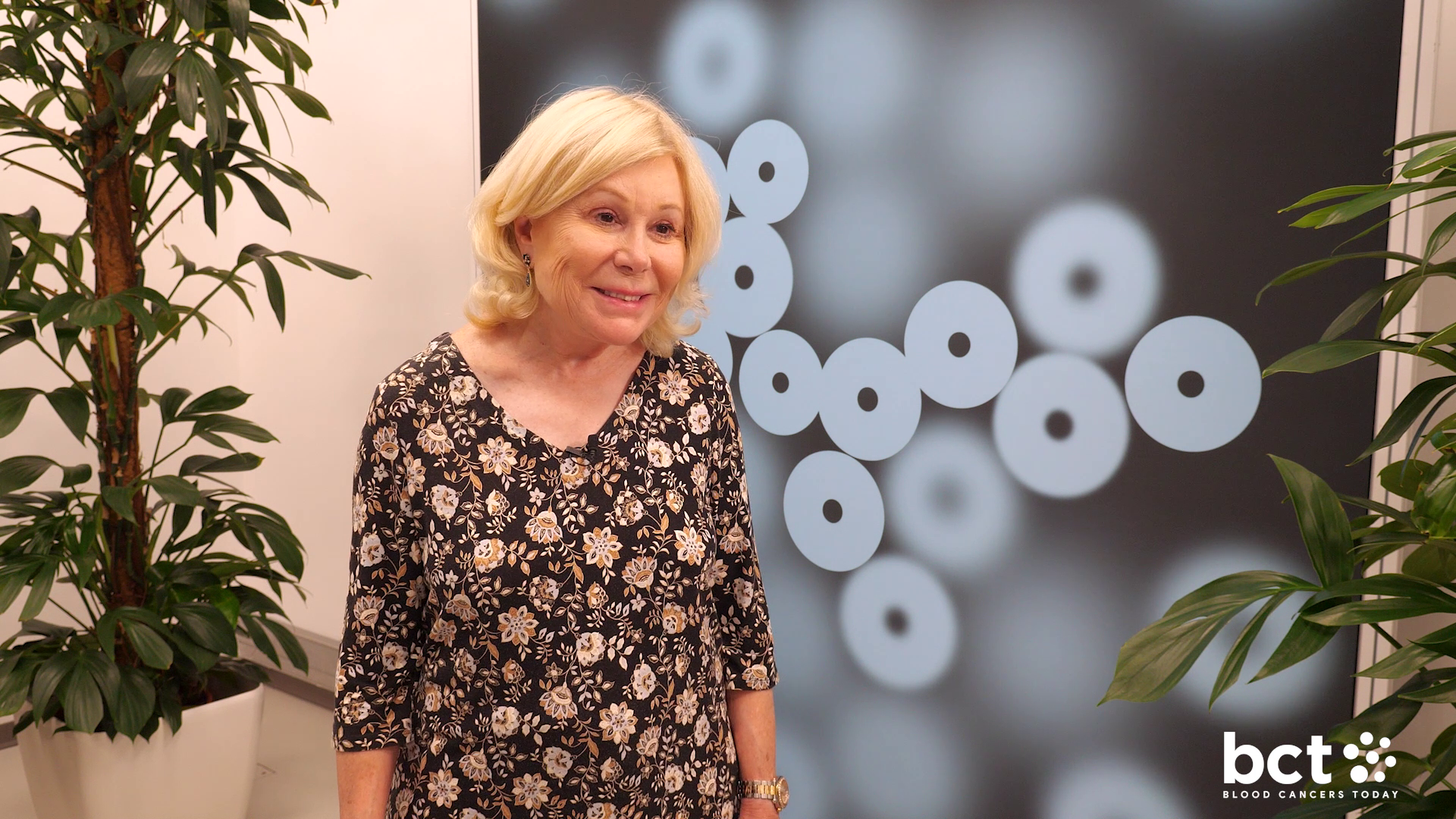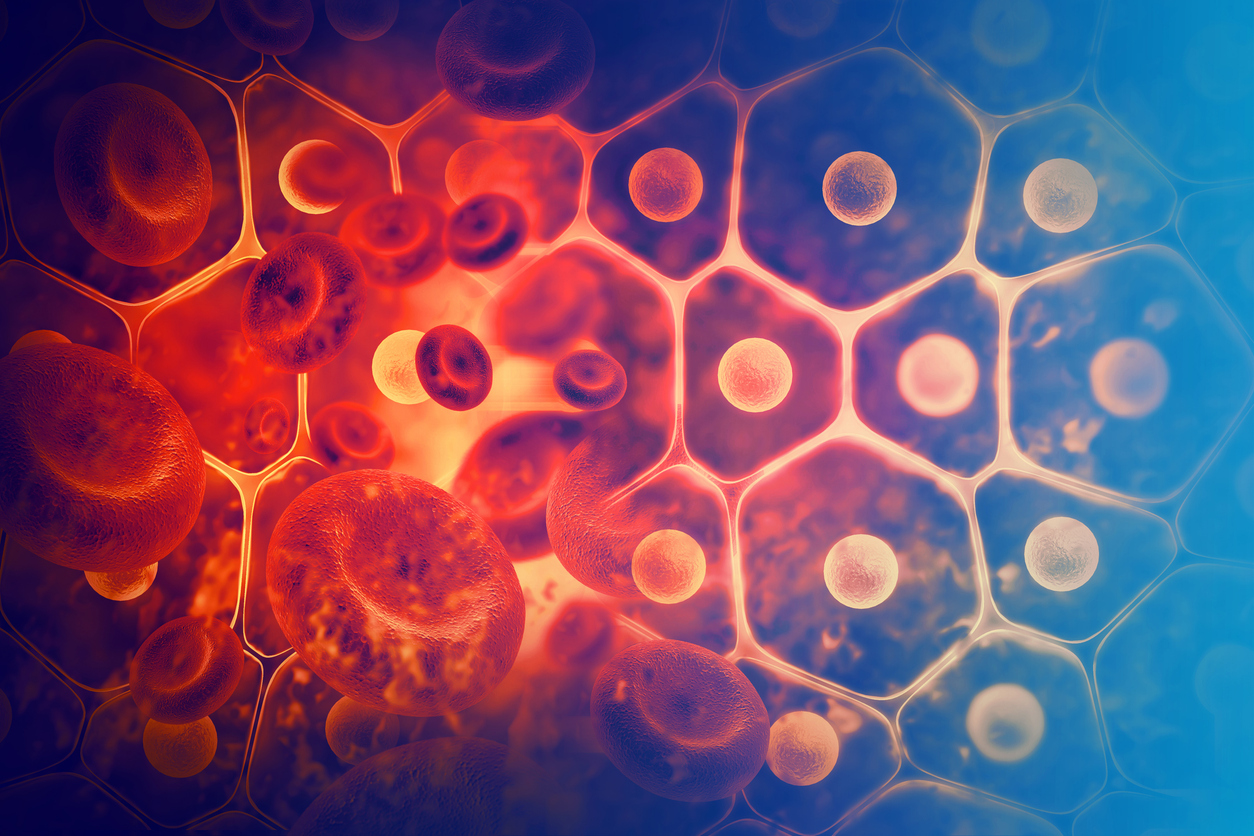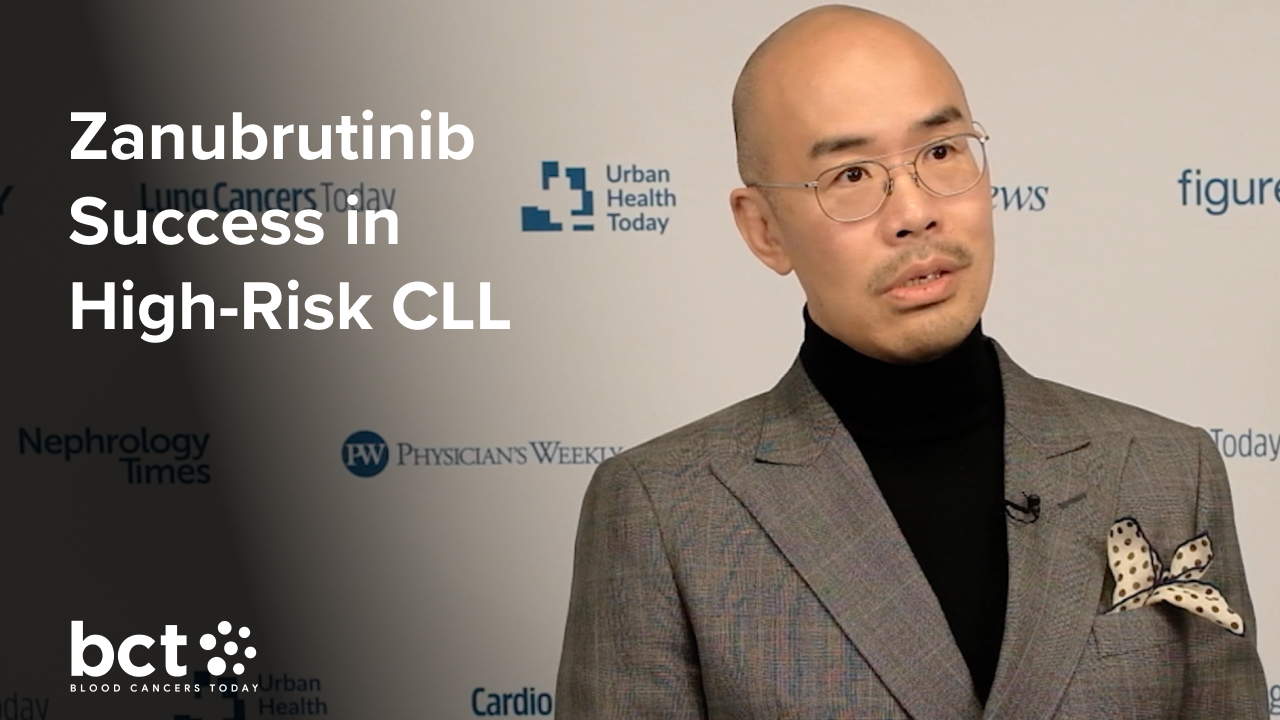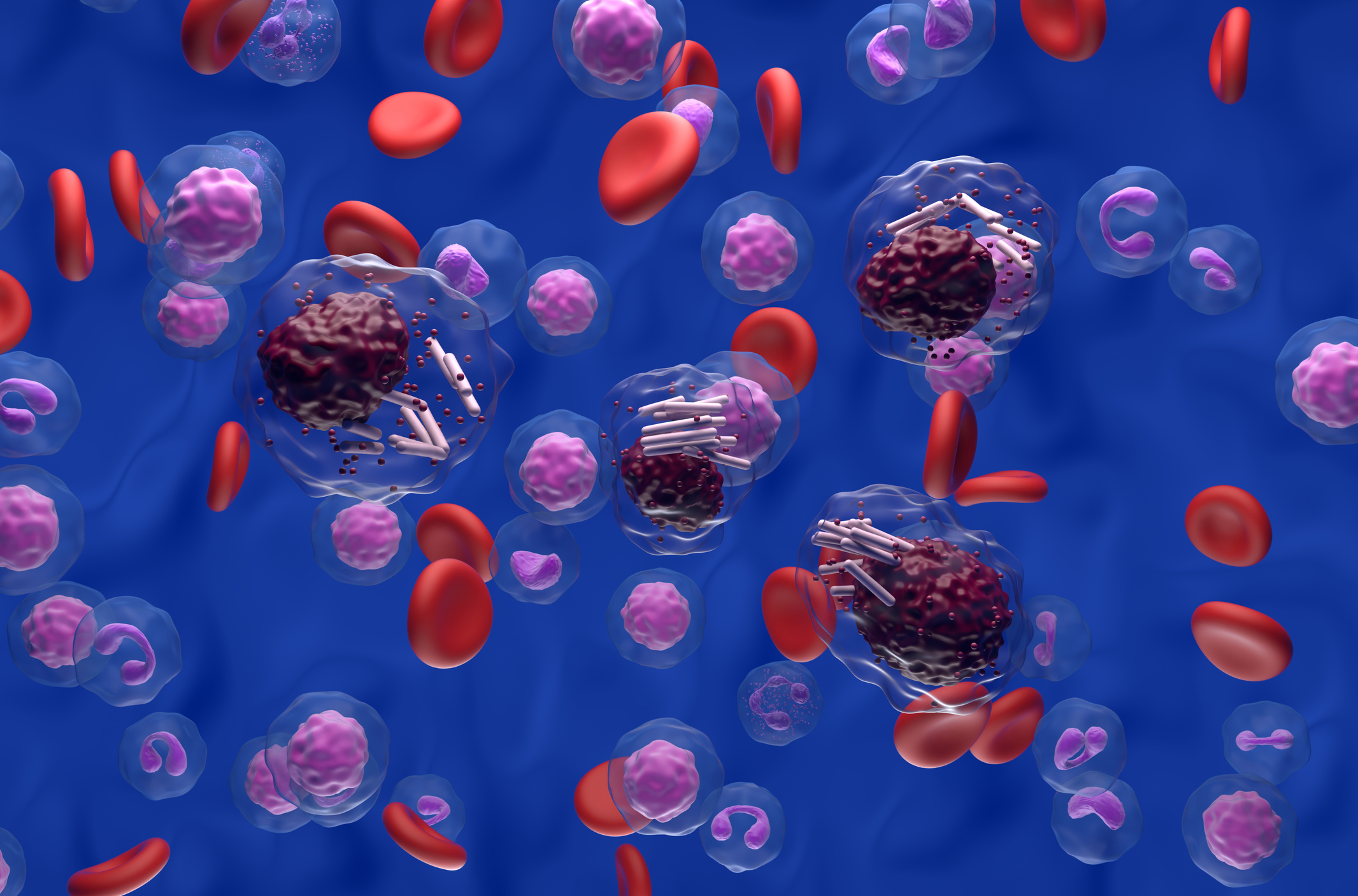
Dr. Coombs, an Associate Professor in the Division of Hematology/Oncology at the University of California, Irvine (UCI) School of Medicine, discusses her journey into oncology, what it’s like to broach both the lymphoid and myeloid worlds, and a unique skill she’s lucky to have.
Where did you grow up, and when did you know you wanted to be a physician? I grew up in the Cincinnati, Ohio, area. I decided to be a physician a bit later than most. I went to college as an economics major but switched to a premed major in my first semester of college. I completed the premed requirements but ended up going to graduate school for chemistry instead since I still wasn’t 100% sure on the decision to pursue a career in medicine, which is such a huge decision. Although I was in a doctoral program for chemistry, I was still thinking about medicine in the back of my mind.
Ultimately, I decided I wanted to do medicine. I took the Medical College Admission Test while I was in graduate school and switched from the doctoral program to get a master’s degree. I enrolled at the University of Cincinnati, which is where I was also in graduate school, as an early-decision medical student. I never looked back after that.
Medicine was never at the forefront of my mind, but once I started thinking about it early in college, it seemed to be a great career because I liked science and interacting with people. It’s a career that melds those two things, and you can fulfill an academic mission, which is another aspiration of mine.
What led you to specialize in hematologic oncology? When I decided I was interested in medicine, I was always going to specialize in cancer. I didn’t have doctors in my family, but I had a lot of family members who had cancer and went through that experience. I admired their oncologists because it’s a uniquely challenging type of medicine that seemed both interesting and rewarding to me.
I primarily had solid tumors in my family, so I was thinking about treating solid tumors. However, my second-year pathology class led me into the blood cancer realm because I completely fell in love with looking at blood cells under the microscope. That path was cemented during my intern year at Duke University Medical Center. I was interested in research, so I did interviews with faculty members for research projects. I met with Mark Lanasa, MD, PhD, who became my earliest mentor in hematologic oncology. He led the chronic lymphocytic leukemia (CLL) program at Duke. Under his guidance, I conducted a few research projects that were an extremely gratifying experience.
I realized patients with CLL are the best patients to have in terms of my goals as an oncologist. I wanted to be able to have long-term, meaningful, and fulfilling relationships with patients, and it’s great to have treatments that are successful. Treating CLL has been a great career so far. I’m glad I was led in that direction early on.
After Duke, I did my fellowship at Memorial Sloan Kettering Cancer Center (MSKCC) from 2013 to 2016. At that time, they didn’t have a faculty member who was highly focused on CLL, so I shifted to myeloid malignancies. My clinical mentor was Martin Tallman, MD, and I worked in translational research under my other mentor, Ross Levine, MD, who continues to be a huge advocate for my career.
When I took my first faculty position at the University of North Carolina (UNC), they were looking for a CLL-focused faculty member. That’s when I hopped back into the CLL realm after doing myeloid and clonal hematopoiesis work at MSKCC. I still do a bit of that. Long-term, my main clinical hat is CLL, but I am in the minority of CLL docs given that I broach both the lymphoid and myeloid worlds.
You can’t overstate the importance of mentors. The most important thing to me is supporting people regardless of whether their career meshes with yours. Dr. Levine is a primarily lab-based scientist, and I thought I wanted to do that when I went into fellowship. However, I realized I wanted to be a clinician and do research. It can be tough to figure out how to broach those two aspects of medicine, but it’s great to have people who support your long-term goals.
Can you speak about your experiences so far and what you’re looking forward to? After six years at UNC, I moved to California. Had I not gotten married, I probably never would have left North Carolina. I loved it there. I loved the institution and my colleagues, but my husband is from Southern California, and we have a young son, so it was a good decision for our family to move closer to relatives. It was a great move for my life, but it has been an interesting experience to have a built a huge CLL practice and then completely start over.
I love my colleagues at UCI, and I am in the process of building a clinic essentially from scratch. It offers many opportunities, but it is also a challenge to begin the process of developing new relationships with referring community doctors and getting to know my all of the new patients that I am seeing after having known my prior patients for years. It was an emotional process for me to leave UNC because I consider my patients as family, and I think about them often (though I know they are and will continue to be in great hands there!). UCI has been less busy clinically so far, but I know that won’t last too long.
Prior to UCI, you established a clinic at UNC that focused on clonal hematopoiesis and clonal cytopenias. What was your experience in that clinic? My research as a fellow at MSKCC focused on determining the implications of clonal hematopoiesis in the setting of advanced solid tumors. We found that having clonal hematopoiesis (with high burden clones) led to shortened cancer-specific survival.
I think it’s important to understand the role of these mutations and counsel patients, so I opened the clinic at UNC in 2019. Seeing CHIP/CCUS primarily involves counseling because we don’t have any known interventions to change the natural history of these mutations. However, we can counsel patients as far as what their risks are, whether there is a risk for developing leukemia in the future, cardiovascular risk, or other emerging associations.
I’m not a proponent of checking for these mutations broadly outside the context of a clinical trial because it creates anxiety to know about them. However, they can be picked up when we’re not looking for them, and it’s good for patients to talk to someone who knows what it means for their health. I still see these types of patients at UCI, though it is not my primary research focus anymore.
How does your work in the clinic inform your research? I think it was Steve Schuster, MD, who said, “My clinic is my lab.” You see situations that you wouldn’t think about otherwise because patients present so uniquely. They give you ideas. You realize there are many situations where there are no data.
Patients give me ideas of where the knowledge gaps are in our current practices. They help me take things back to my own research projects, whether that’s developing a clinical trial or coming up with a real-world research question.
I always want to do better for our patients. It’s natural to ask, “What is the right thing to do in this situation based on the knowledge we have?”
How have you seen treatment for CLL evolve throughout your career? I graduated medical school in 2010. When I was a resident, it was primarily chemotherapy-based treatments, but ibrutinib was just coming into the clinic—obviously first in the clinical trial setting—but then it subsequently received US Food and Drug Administration approval in 2013, which is when I started fellowship. I saw the end of the chemoimmunotherapy days.
As an attending, treatment has been primarily based on targeted novel agents, which is phenomenal because chemotherapy works but has severe toxicities that can be permanent. Not to say these novel agents don’t have side effects, but for the most part, patients are living longer and their cancers are staying in remission longer. There is better progression-free survival and overall survival without the need for cytotoxic chemotherapy.
Things are continuing to change, though. When novel agents are first introduced, they’re used as continuous treat-to-progression therapies. However, with the introduction of venetoclax—and the future being venetoclax and Bruton’s tyrosine kinase (BTK) inhibitor combinations—I think we’re going see a lot more time-limited therapies as opposed to indefinite treatments. There are other novel classes coming out that I’m also excited about, like the noncovalent BTK inhibitors or agents that are even more futuristic, like chimeric antigen receptor T-cell therapy, BTK degraders, and bispecific antibodies. The options have expanded. The future is bright for patients due to these developments.
What are your plans for future research? I’ve been involved with the development of pirtobrutinib. I enrolled a good number of patients to the phase I/II BRUIN trial while I was at UNC. In the future, there is work to develop that drug further in multiple phase III trials. At UCI, I’m participating in the phase III trial of venetoclax with rituximab, with or without pirtobrutinib. There are several other phase III trials of pirtobrutinib that I’m also involved with in some capacity, and I’ve been excited to join the SWOG working group for CLL. I have also been working on developing an investigator-initiated trial, which is a huge undertaking. I also still participate in real-world CLL research projects.
How do you like to spend your time outside of work? My two favorite things are animals and nature. I am an avid hiker, and I like being out West because the weather is much more pleasant. There are so many beautiful places to go hiking, and you can do it year-round. The past five years, I have hiked to the bottom of the Grand Canyon at least once annually, though my favorite place to hike is definitely Utah (especially Zion National Park).
As far as animals go, I sadly had to rehome my seven chickens in North Carolina. I’m hoping once we buy a house, I can reestablish a new coop and flock because I love being a chicken owner. We also have two dogs. I love taking my son to the zoo and the aquarium—both the San Diego Zoo and aquarium are amazing. My son got his love of animals from me, so we love seeing what all of Southern California has to offer.
Do you have a skill, hobby, or interest that readers might be surprised to learn about? I don’t know anyone who’s as good at finding four-leaf clovers as I am. I look down, and even when I’m not looking for one, I find four-leaf clovers. I used to keep a little laminated book of all the ones I found, and then it just became too many.
Catherine Coombs, MD, is an Associate Professor in the Division of Hematology/Oncology at the UCI School of Medicine.





 © 2025 Mashup Media, LLC, a Formedics Property. All Rights Reserved.
© 2025 Mashup Media, LLC, a Formedics Property. All Rights Reserved.